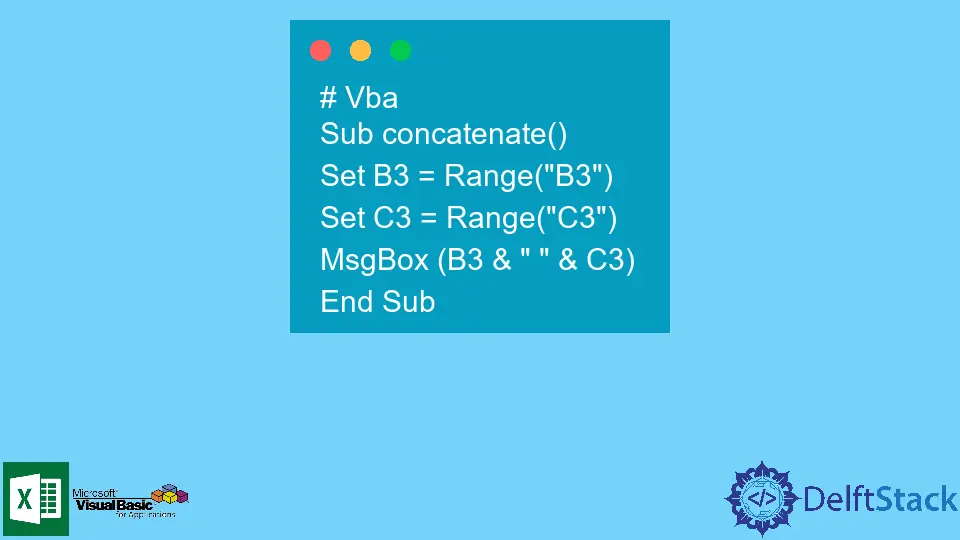How to Concatenate String in VBA
- Understanding String Concatenation in VBA
- Using the Ampersand Operator
- Using the Plus Operator
- Using the Join Function
- Conclusion
- FAQ

Concatenating strings in VBA (Visual Basic for Applications) can be a fundamental yet powerful skill for anyone looking to manipulate text data in Microsoft Office applications. Whether you’re working in Excel, Access, or Word, knowing how to join strings together can enhance your data management and reporting capabilities.
In this article, we will demonstrate various methods to concatenate strings in VBA, from simple techniques to more advanced approaches. By the end, you will have a solid understanding of how to effectively combine text strings, making your VBA programming more efficient and robust.
Understanding String Concatenation in VBA
String concatenation is the process of joining two or more strings together to form a single string. In VBA, this can be achieved through several methods. The most common way is using the ampersand (&) operator, but there are other methods as well, including the use of the plus (+) operator and the Concat function. Each method has its own nuances, and understanding these can help you choose the best approach for your specific needs.
Using the Ampersand Operator
The ampersand operator is the most commonly used method for concatenating strings in VBA. It is straightforward and intuitive, making it an excellent choice for beginners. Here’s a simple example:
Sub ConcatenateWithAmpersand()
Dim firstName As String
Dim lastName As String
Dim fullName As String
firstName = "John"
lastName = "Doe"
fullName = firstName & " " & lastName
MsgBox fullName
End Sub
Output:
John Doe
In this example, we declare three string variables: firstName, lastName, and fullName. We then assign values to firstName and lastName. The concatenation occurs when we use the ampersand operator to combine firstName, a space, and lastName, resulting in fullName. Finally, we display the result in a message box.
Using the ampersand operator is beneficial because it allows for easy readability and is less prone to errors compared to other methods. It’s also versatile, as you can concatenate as many strings as you need without any limitations.
Using the Plus Operator
Another method for concatenating strings in VBA is using the plus (+) operator. This method is less common but can be useful in certain situations. Here’s how it works:
Sub ConcatenateWithPlus()
Dim firstName As String
Dim lastName As String
Dim fullName As String
firstName = "Jane"
lastName = "Smith"
fullName = firstName + " " + lastName
MsgBox fullName
End Sub
Output:
Jane Smith
In this example, we again declare three string variables and assign values to firstName and lastName. We then use the plus operator to concatenate these strings, resulting in fullName. The final output is displayed in a message box.
While the plus operator can be used for string concatenation, it is essential to be cautious. If either variable is Null, the result will also be Null, which can lead to unexpected outcomes. Therefore, while it may be convenient, the ampersand operator is generally preferred for string concatenation in VBA.
Using the Join Function
For cases where you have an array of strings that you want to concatenate, the Join function is an excellent option. This function allows you to specify a delimiter, making it easy to format your output. Here’s an example:
Sub ConcatenateWithJoin()
Dim names() As String
Dim fullName As String
names = Split("Alice,Bob,Charlie", ",")
fullName = Join(names, " ")
MsgBox fullName
End Sub
Output:
Alice Bob Charlie
In this example, we first declare an array of strings called names and populate it using the Split function, which separates the names using a comma. We then use the Join function to concatenate the array elements into a single string, separated by spaces. The final result is displayed in a message box.
The Join function is particularly useful when dealing with multiple strings, as it simplifies the process and allows for customization of the delimiter. This method is efficient and reduces the complexity of concatenating multiple strings manually.
Conclusion
In summary, concatenating strings in VBA is a fundamental skill that can greatly enhance your programming capabilities within Microsoft Office applications. Whether you choose to use the ampersand operator, the plus operator, or the Join function, each method has its advantages and specific use cases. Mastering these techniques will not only improve your code readability but also streamline your data manipulation processes. As you continue to explore VBA, you’ll find that string concatenation is just one of the many tools at your disposal for creating more efficient and effective applications.
FAQ
-
What is string concatenation in VBA?
String concatenation in VBA is the process of joining two or more strings together to create a single string. -
Which operator is preferred for string concatenation in VBA?
The ampersand (&) operator is generally preferred for string concatenation due to its readability and reliability. -
Can I use the plus (+) operator for concatenation in VBA?
Yes, you can use the plus operator for concatenation, but be cautious as it can result inNullif any variable isNull. -
What is the Join function in VBA?
The Join function in VBA combines elements of an array into a single string, allowing you to specify a delimiter. -
How can I concatenate multiple strings in VBA?
You can concatenate multiple strings using the ampersand operator, the plus operator, or the Join function for arrays.